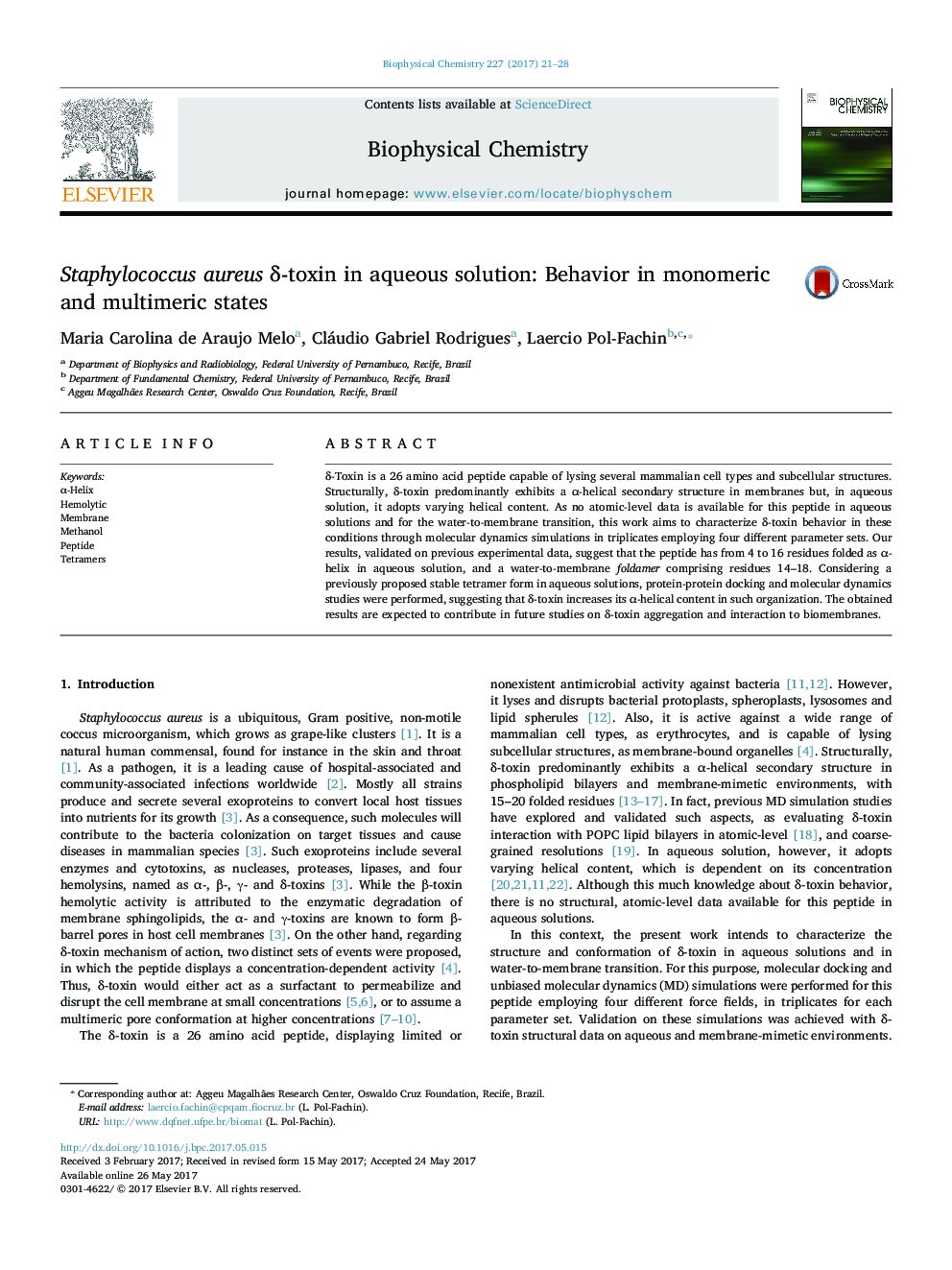| Article ID | Journal | Published Year | Pages | File Type |
|---|---|---|---|---|
| 5370636 | Biophysical Chemistry | 2017 | 8 Pages |
â¢Î´-Toxin has from around 4 to 16 residues folded as α-helix in aqueous solution.â¢Î´-Toxin water-to-membrane foldamer is the region comprising residues 14-18.â¢Î´-Toxin increases its α-helical content in its tetrameric organization.
δ-Toxin is a 26 amino acid peptide capable of lysing several mammalian cell types and subcellular structures. Structurally, δ-toxin predominantly exhibits a α-helical secondary structure in membranes but, in aqueous solution, it adopts varying helical content. As no atomic-level data is available for this peptide in aqueous solutions and for the water-to-membrane transition, this work aims to characterize δ-toxin behavior in these conditions through molecular dynamics simulations in triplicates employing four different parameter sets. Our results, validated on previous experimental data, suggest that the peptide has from 4 to 16 residues folded as α-helix in aqueous solution, and a water-to-membrane foldamer comprising residues 14-18. Considering a previously proposed stable tetramer form in aqueous solutions, protein-protein docking and molecular dynamics studies were performed, suggesting that δ-toxin increases its α-helical content in such organization. The obtained results are expected to contribute in future studies on δ-toxin aggregation and interaction to biomembranes.
Graphical abstractDownload high-res image (241KB)Download full-size image
